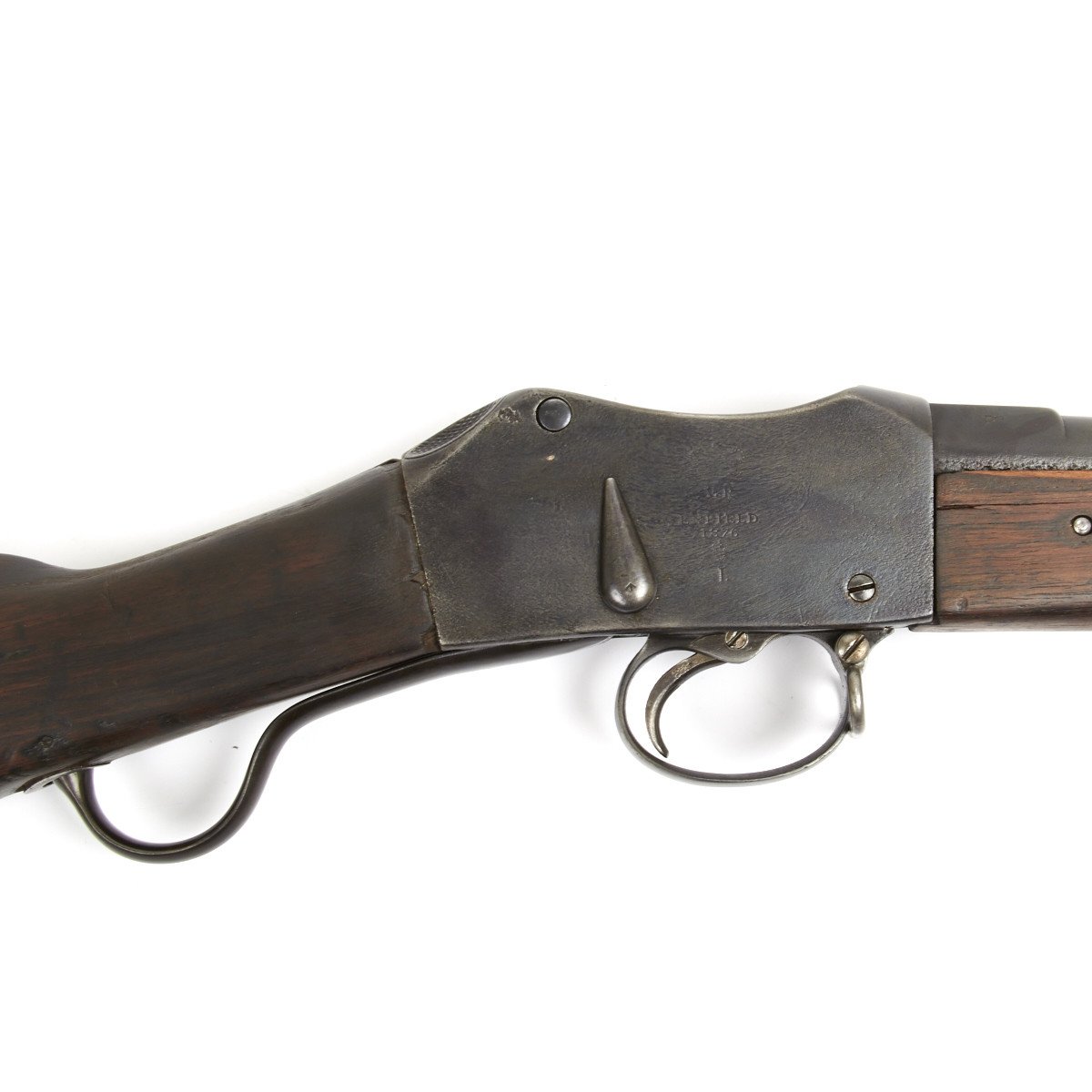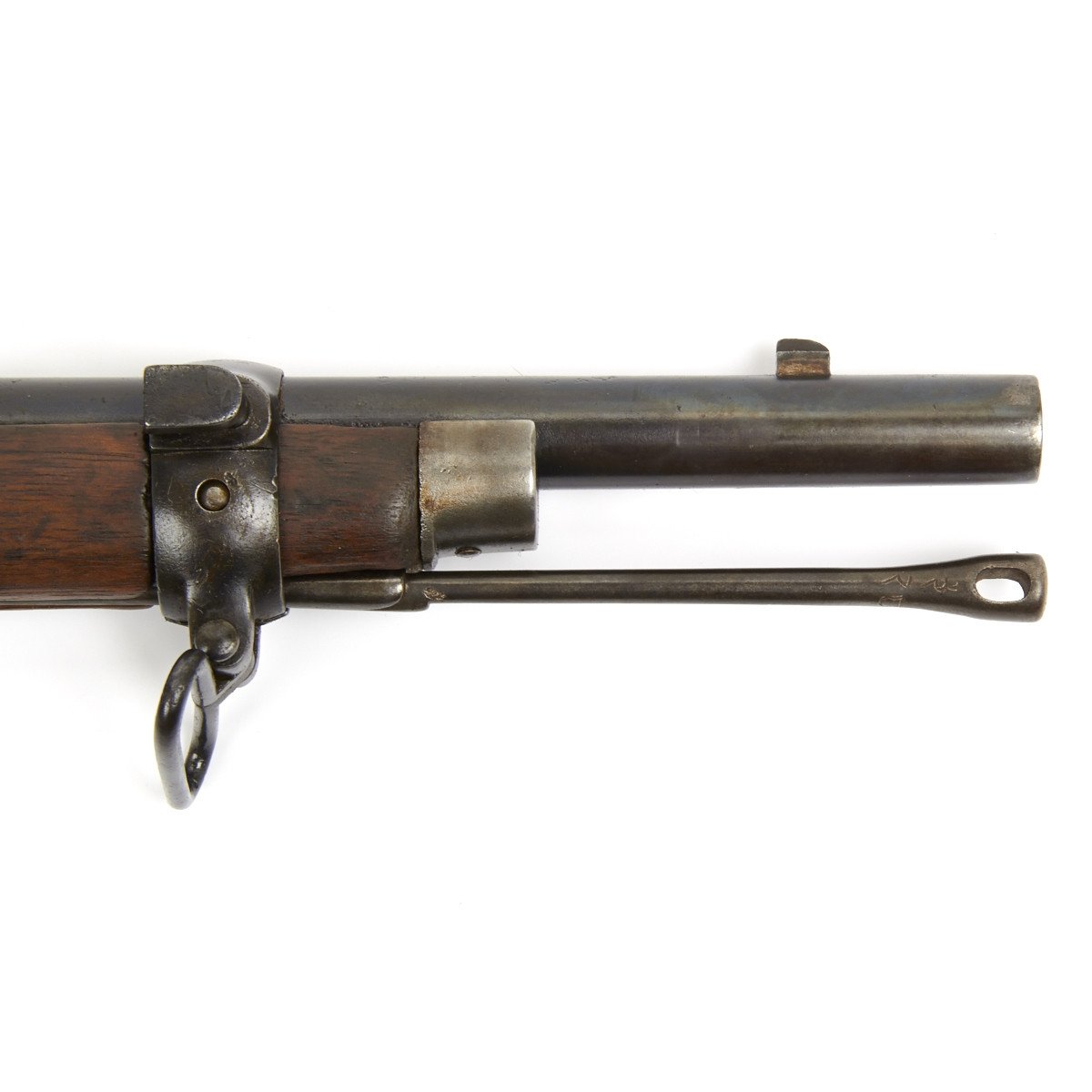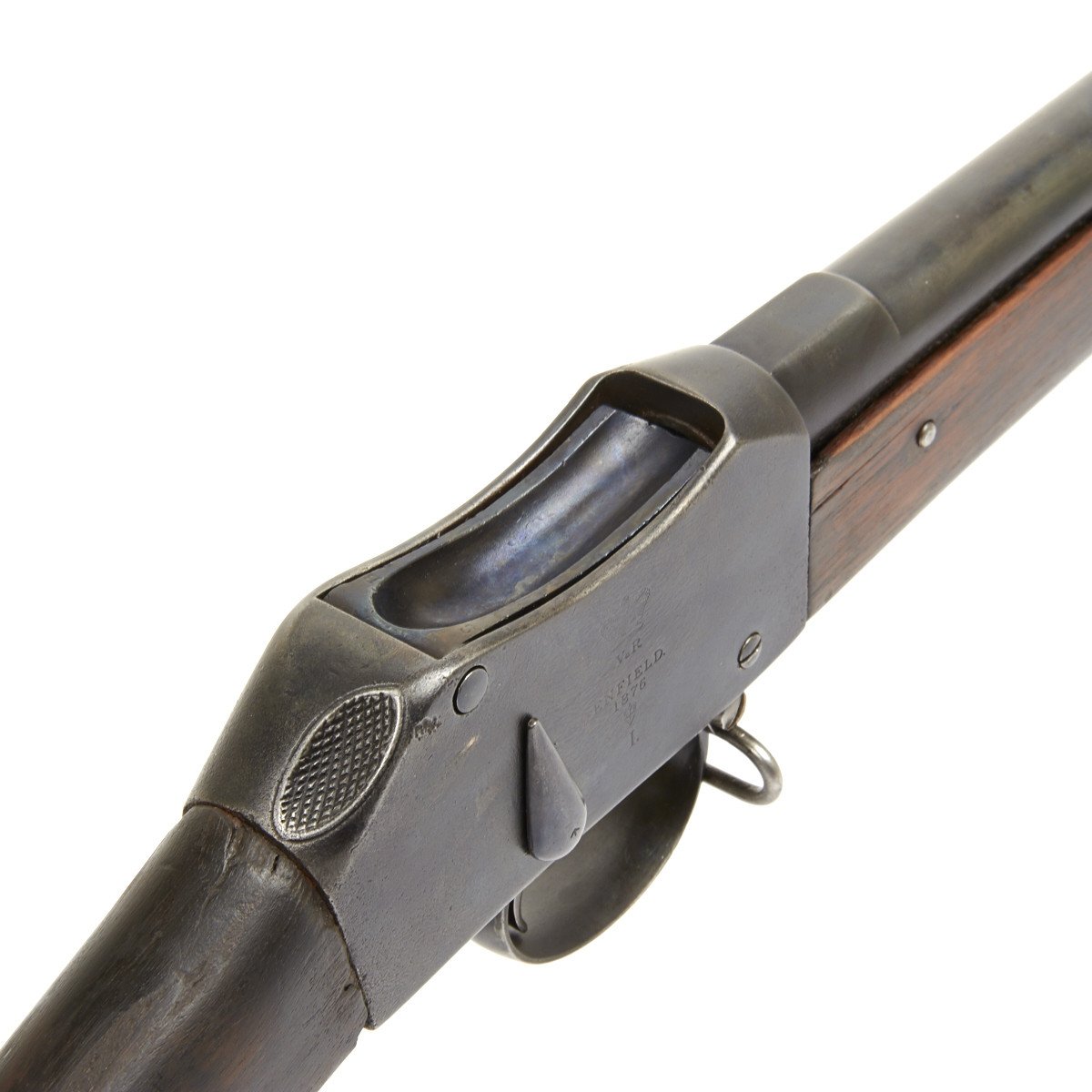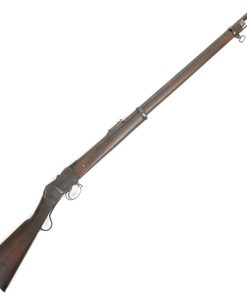Original British Martini-Henry Mk1 3rd Pattern Rifle – Enfield 1876 Original Items
$ 1.295,00 $ 323,75
Original Item: Only one Available. The Martini Henry Mk1 3rd (approved) pattern was the standard issue firearm between 1874-1880.
Before final approval and general issue, several features of the MK1 2nd pattern rifle were altered: The sling swivel on the stock was abolished March 1875. It was however retained by Rifle Regiments. The Mk1 breech- block was previously held in place by a bronze axis pin that frequently fell out, the new modal had a new split sprung cotter pin fitted in its place. The recess left by the adjacent locking screw had a small crescent shaped panel installed and this was filled and blued to match the action. The new rifle was now ready for general issue to the troops, on July 7th 1874 the service pattern was sealed.
On 26th February 1876, LOC 2955 the clearing rod was adapted, with the edges rounded to prevent bore damage when cleaning, the clearing rods bulbous end was chamfered as it caused arms that were piled by troops to tangle, also the diameter of the rod tip was reduced to between .446/.448, to allow it to be used as a rammer ejecting a stuck cartridge
The Mk1 rifle began to attract negative comment, In particular the alarmingly large number of accidental discharges when the breech-block was closed and high degree of hair triggers. The fault was found to lie with the trigger nose as it rested on the action, if foreign objects got under this rest the result was the trigger sear would accidentally skip over the tumbler rest, resulting in a misfire. As a result in 1876 the new pattern rifle the MkII was approved and most Mk1 arms were converted.
Features of the Mk1 3rd Approved Martini Henry Rifle:
1) Butt plate checkered pattern.
2) Shallow V notch sight ladder.
3) Polished breechblock marked S.B. Single gas hole in base.
4) Buttstock Sling Swivel: abolished March 1875 (Retained for Rifle Brigade)
5) Serial numbers to Barrel, Receiver, Sight ladder, Breech block, Extraction lever and trigger assembly (serial numbers ran AA 1000, AB on so on).
6) Bulb end clearing rod with raised cam, diameter reduced to .448
7) Spring steel split axis pin.
8) Two-part tumbler incorporating trigger sear and tumbler arm
9) Cutaway to extractor claw arm.
10) Countersunk muzzle.
This example still retains:
1. MkI checkered butt plate
2. Receiver with Roman number I (it was never re-stamped as were the MkII conversions).
3. Rare MkI tulip head bulb end cleaning rod.
4. Polished breechblock marked SB
Fast Shipping with Professional Packaging
Thanks to our longstanding association with UPS FedEx DHL, and other major international carriers, we are able to provide a range of shipping options. Our warehouse staff is expertly trained and will wrap your products according to our exact and precise specifications. Prior to shipping, your goods will be thoroughly examined and securely secured. We ship to thousands clients each day across multiple countries. This shows how we're dedicated to be the largest retailer on the internet. Warehouses and distribution centres can be located throughout Europe as well as the USA.
Note: Orders with more than one item will be assigned a processing date depending on the item.
Before shipping before shipping, we'll conduct a thorough inspection of the items you have ordered. Today, the majority of orders will be delivered within 48 hours. The delivery time will be between 3-7 days.
Returns
The stock is dynamic and we cannot completely manage it because multiple stakeholders are involved, including our factory and warehouse. So the actual stock may alter at any time. It's possible that you may not receive your order once the order has been made.
Our policy is valid for a period of 30 days. If you don't receive the product within 30 days, we are not able to issue a refund or an exchange.
You can only return an item if it is unused and in the same state as the day you received it. You must have the item in its original packaging.
Related products
Uncategorized
Uncategorized
Uncategorized
Armoured Fighting Vehicles of the World: AFVs of World War One (Hardcover Book) New Made Items
Uncategorized
Uncategorized
Band of Brothers ORIGINAL GERMAN WWII Le. F.H. 18 10.5cm ARTILLERY PIECE Original Items
Uncategorized
Uncategorized
Uncategorized
Uncategorized
Uncategorized
Uncategorized
Australian WWII Owen MK1 Machine Carbine SMG Custom Fabricated Replica with Sling Original Items
Uncategorized
Uncategorized
Uncategorized
Uncategorized
Angolan Rebel 1970s era 60mm Inert Display Mortar from Angolan Civil War Original Items
Uncategorized
Uncategorized
Uncategorized
Uncategorized












































































